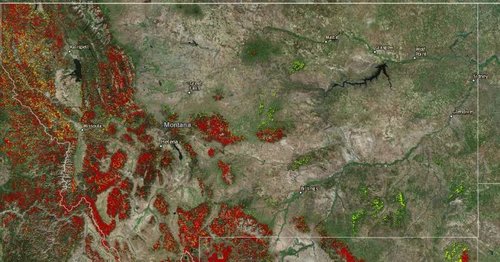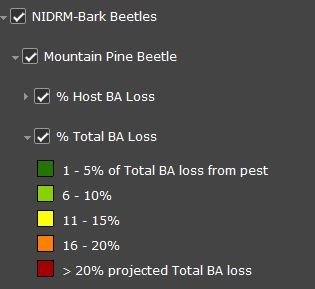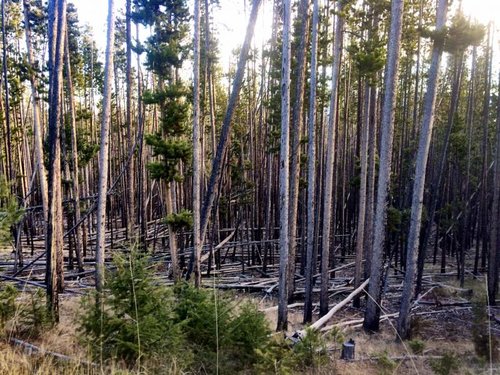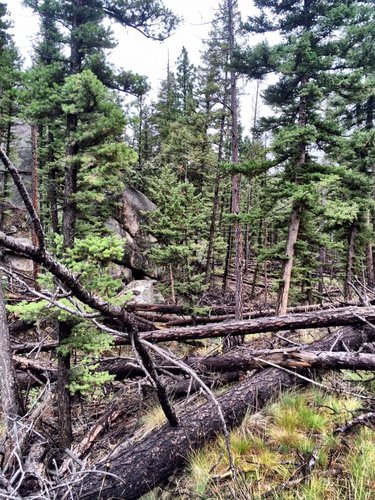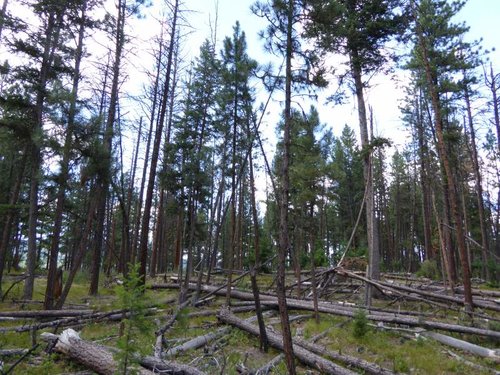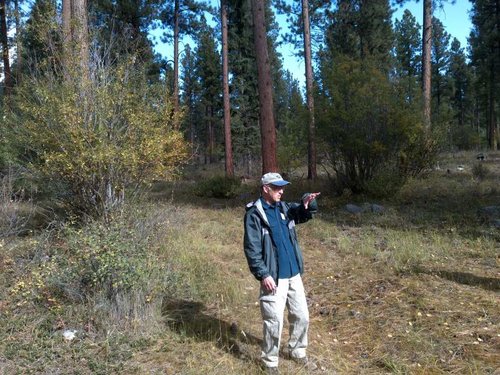BigHornRam
Well-known member
Well at least sort of.
I, for some reason am having a hard time getting people to understand what poor forestry work looks like, so I'll try a different approach.
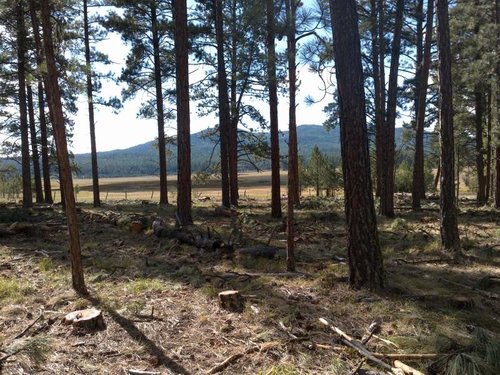
This project is on the UM experimental forest called the Bandy Ranch. The land was gifted to the UM years ago. Other side of the fence is the Blackfoot Clearwater Wildlife Management area.
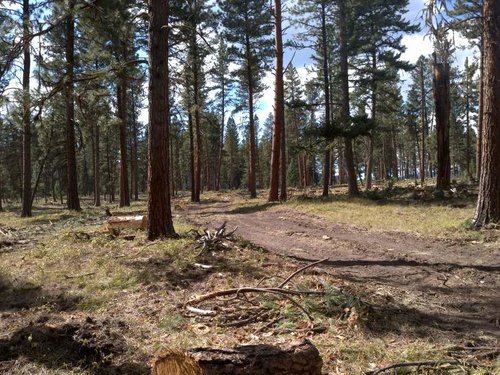
Several years ago this stand was in need of a commercial thinning. Thinning would have provided a modest amount of revenue to the University. Higher ups resisted doing the thinning and soon after the mountain pine beetles came along and made big mess of things. Sorry I didn't take pictures of the control area to post here. It was a mess.
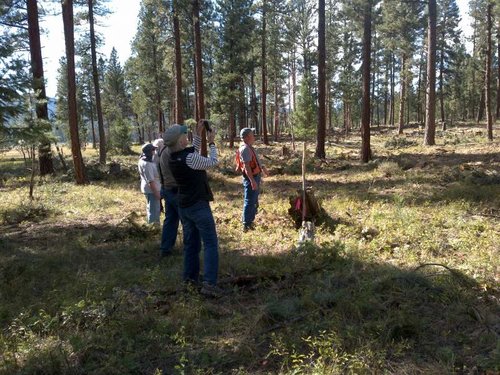
Peter Kolb, MSU Extension Forestry, (pictured here conducting a tour while work was in progress this summer) proposed a project with a number of demonstration plots in an attempt to salvage what was left of this stand. University of Montana agreed to it as long it didn't cost them anything to do the work.
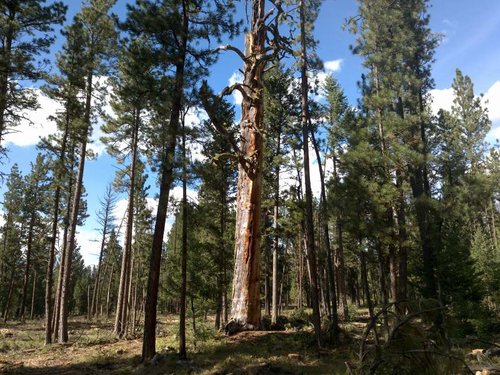
Extra care was taken not damage the patriarch of this stand.
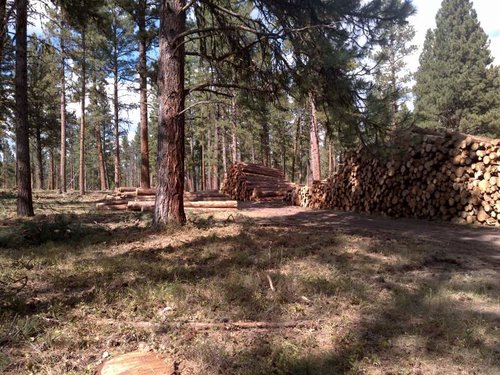
This is what paid to get the work done. The big pile is beetle killed pine that went out for pulp. The other piles went to a mill for saw logs. There were several more stacks of logs like this through out the project area. Slash was raked and piled a few weeks later, to be burned in the future when conditions allow for it.
I, for some reason am having a hard time getting people to understand what poor forestry work looks like, so I'll try a different approach.

This project is on the UM experimental forest called the Bandy Ranch. The land was gifted to the UM years ago. Other side of the fence is the Blackfoot Clearwater Wildlife Management area.

Several years ago this stand was in need of a commercial thinning. Thinning would have provided a modest amount of revenue to the University. Higher ups resisted doing the thinning and soon after the mountain pine beetles came along and made big mess of things. Sorry I didn't take pictures of the control area to post here. It was a mess.

Peter Kolb, MSU Extension Forestry, (pictured here conducting a tour while work was in progress this summer) proposed a project with a number of demonstration plots in an attempt to salvage what was left of this stand. University of Montana agreed to it as long it didn't cost them anything to do the work.

Extra care was taken not damage the patriarch of this stand.

This is what paid to get the work done. The big pile is beetle killed pine that went out for pulp. The other piles went to a mill for saw logs. There were several more stacks of logs like this through out the project area. Slash was raked and piled a few weeks later, to be burned in the future when conditions allow for it.




